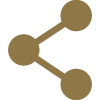Contemporary Theory of Semiconductors and Devices
Semiclassical and Quantum Physical Principles and Applications
Springer
ISBN 978-3-032-00295-2
Standardpreis
Bibliografische Daten
Fachbuch
Buch. Hardcover
2026
29 s/w-Abbildungen, 167 Farbabbildungen.
In englischer Sprache
Umfang: xxv, 470 S.
Format (B x L): 15,5 x 23,5 cm
Verlag: Springer
ISBN: 978-3-032-00295-2
Weiterführende bibliografische Daten
Das Werk ist Teil der Reihe: Graduate Texts in Physics
Produktbeschreibung
The book is divided into two parts. The first part covers fundamental theory, including the semiclassical formalism, essential concepts for understanding n-type and p-type semiconductors, and the principles governing optoelectronic devices. It also introduces the foundations of simple quantum structures using the transfer matrix method within the scattering approach.
The second part focuses on emblematic semiconductor devices, covering representative technologies such as light-emitting diodes, solar cells, bipolar transistors, Schottky junctions, MOS, and MOSFETs. It also explores advanced topics like the optical response of GaN-based blue-emitting lasers, transport in biased quantum heterostructures, tunneling time, integral quantum Hall effect, spin injection efficiency and spin inversion in magnetic superlattices, asymmetric quantum dots, quantum wires containing axial heterostructures, electronic transport in graphene, and multichannel disordered conductors.
In addition to discussing well-known semiconductor properties, this book includes several advanced topics that have emerged in semiconductor physics over the last 30 years, many of which are based on the author’s research. These include the optical response of semiconductor superlattices, multichannel conductance in double potential barriers, spin injection, and spin manipulation, as well as tunneling times and the distribution of transition probabilities. The book also presents a novel analytical treatment of the inversion layer in MOS and MOSFET structures, offering new insight into a problem unsolved since the 1950s. Furthermore, it introduces a fresh theoretical perspective on the integral quantum Hall effect, providing a compact expression for the Hall resistance that captures the experimentally observed plateaus.
While some theoretical developments and applications in this book require a background in quantum theory, the presentation is exhaustive, pedagogic, and clear enough for undergraduate students to follow.
Autorinnen und Autoren
Produktsicherheit
Hersteller
Springer Nature Customer Service Center GmbH
Europaplatz 3
69115 Heidelberg, DE
ProductSafety@springernature.com

 BÜCHER VERSANDKOSTENFREI INNERHALB DEUTSCHLANDS
BÜCHER VERSANDKOSTENFREI INNERHALB DEUTSCHLANDS











